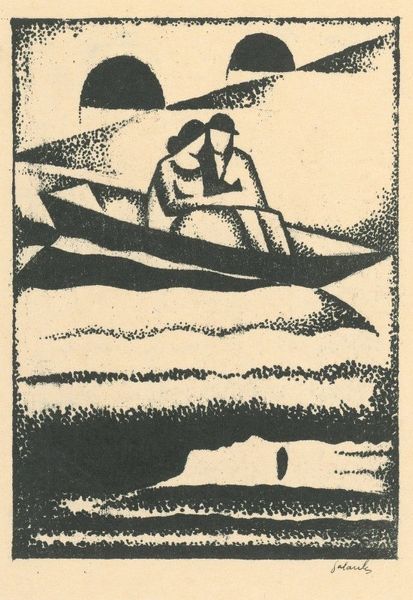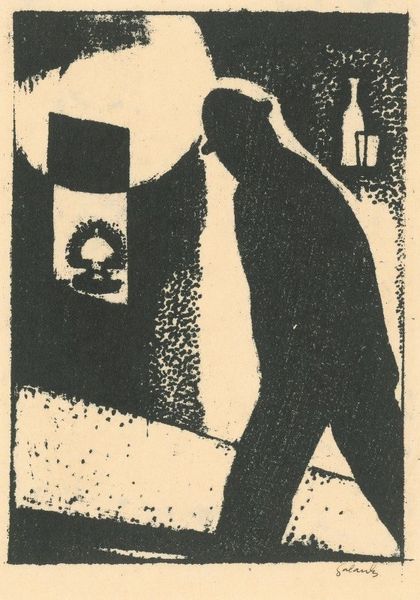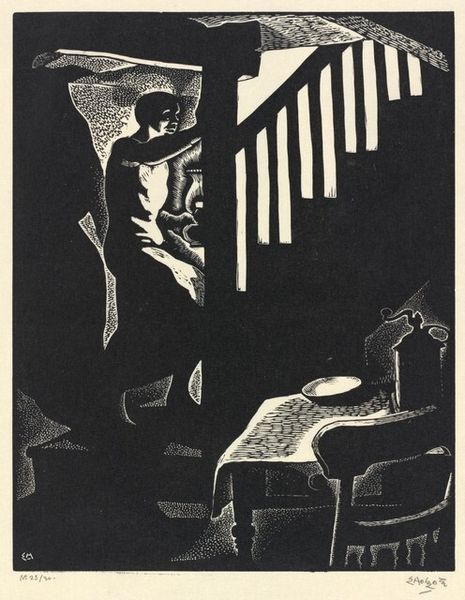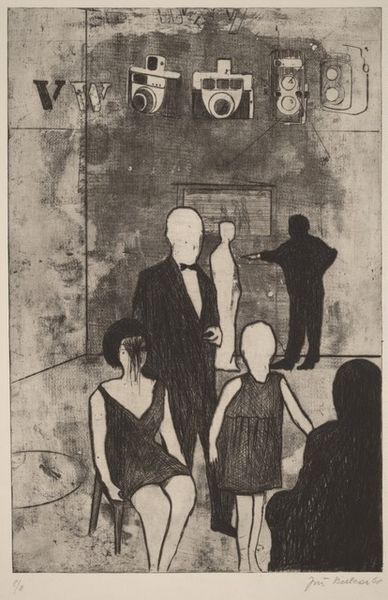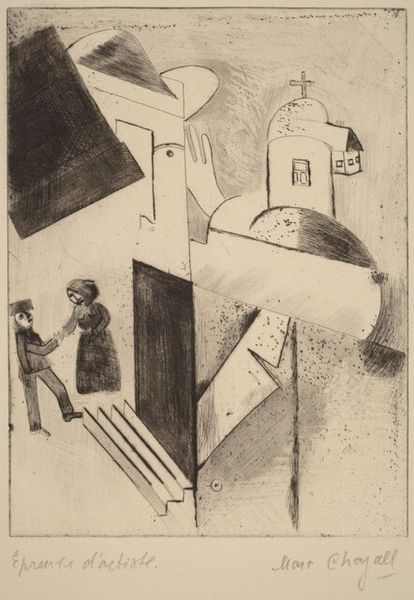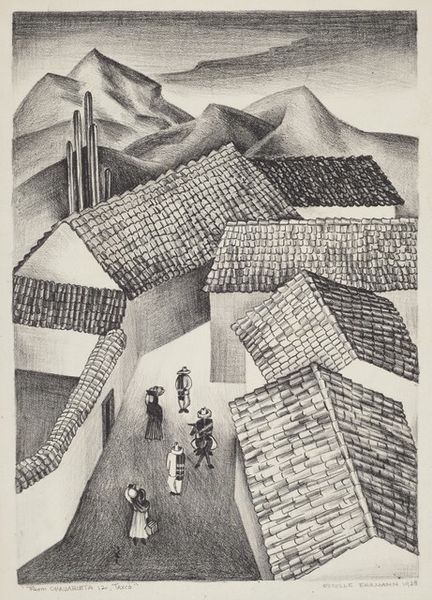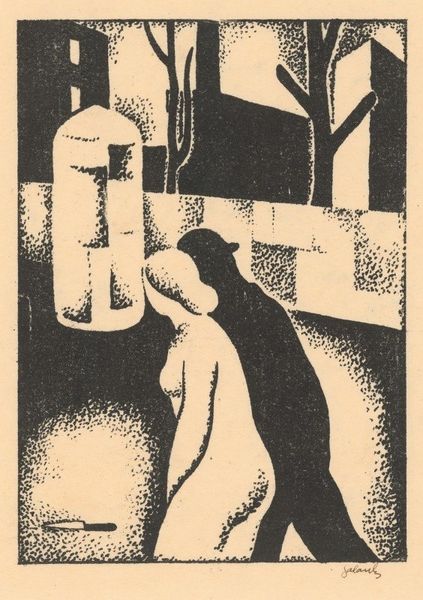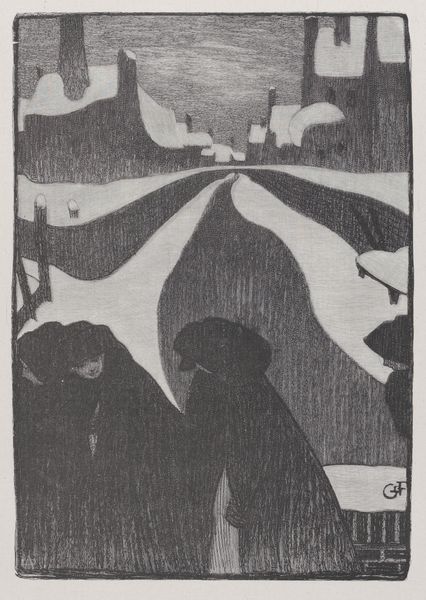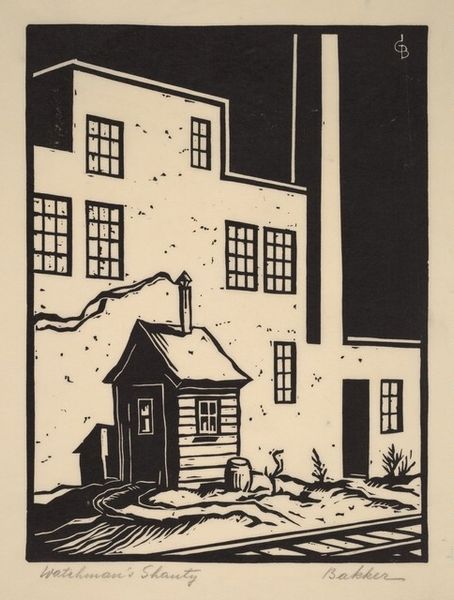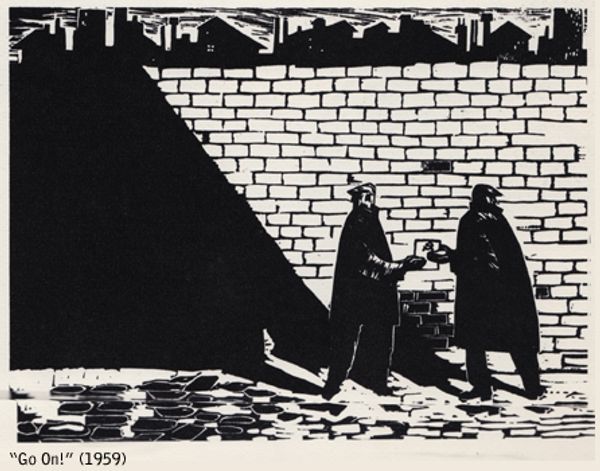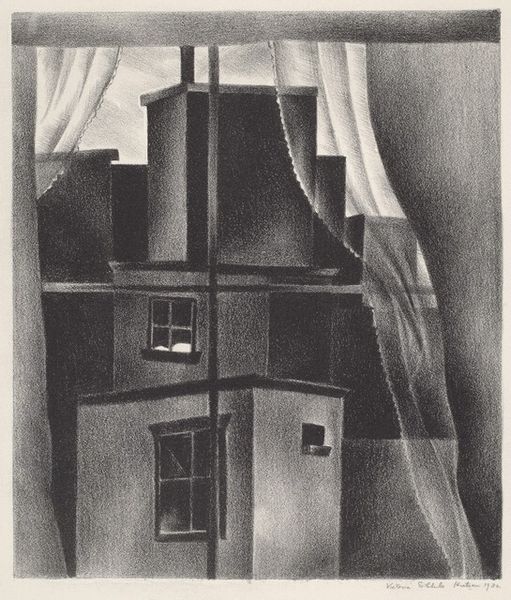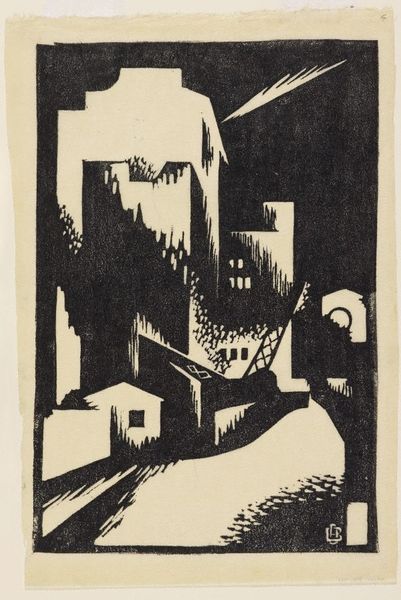
drawing, collage, ink
#
drawing
#
cubism
#
collage
#
abstract
#
ink
#
geometric
#
abstraction
#
cityscape
Copyright: Public Domain: Artvee
Curator: Mikuláš Galanda’s “The Meeting,” created in 1924, uses ink, collage, and drawing techniques to deliver a compelling abstract cityscape. It immediately strikes me as starkly geometric and unsettling. Editor: I see that. There's a deliberate use of black and white to create high contrast and defined shapes. Given its creation during a period of immense societal change, especially within post-war Europe, one has to wonder how Galanda situates his figures within a landscape defined by austere architectural forms. Curator: Exactly. Galanda was engaging with cubist principles. This feels like an articulation of alienation. Note the facelessness of the figures, which removes individual identity. This dehumanization speaks volumes about the era. Are we to assume that “The Meeting” is an empty transaction? A metaphor for the loss of personal connection amidst modern, urban sprawl? Editor: The building looms in the background, rendered partially in shadow, which reinforces a sense of oppression. I wonder what the artist intended by abstracting recognizable architecture. Perhaps Galanda sought to critique institutional power as represented by architecture that dominates public space? Curator: It's vital to remember Slovakia was at the intersection of major political forces and nationalist movements. The ambiguity in his work serves as a critical response to rapid urbanization and standardization and the societal impact of progress and loss of the sense of community, or the question of personal agency under totalitarian states. Editor: That is well stated. Seeing the image within that historical framing makes its commentary even sharper, doesn't it? The limited palette makes this a universal portrayal applicable beyond specific geopolitical scenarios. Curator: Absolutely. Its simplicity becomes a strength, allowing it to speak across time. "The Meeting," rather than offering answers, powerfully visualizes the disquiet of its age, urging the viewer to confront their relationship with space, identity, and the collective. Editor: A thought-provoking commentary on individuals' connection with societal power. This examination highlights the ever-shifting conversation among citizen, architecture, and political agendas, underscoring the power of art as a messenger of silent upheaval.
Comments
No comments
Be the first to comment and join the conversation on the ultimate creative platform.
